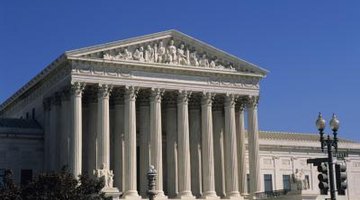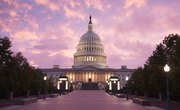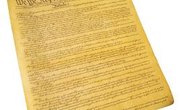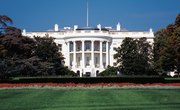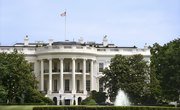The federal government of the United States has three wings, or branches, that share power. These are the executive, judicial and legislative branches. The sharing of governance is known as federalism, and power is also shared with state and local governments. However, the Constitution of the United States establishes that the laws of the federal government have supremacy over state law.
Constitution
The U.S. Constitution was written in 1787, and, by 1790, it had been ratified by all of the 13 states. The document set forth a unique federal government in which powers and responsibilities are both separate and shared between the executive, legislative and judicial branches. This acts as a system of checks and balances to keep power from being concentrated and corrupted. For example, the Supreme Court gets to interpret the constitutionality of laws, but the president appoints justices to sit on the court. However, the Senate can refuse to approve presidential appointees.
Legislative
Article 1, Section 1 of the Constitution grants legislative power to the House of Representatives and the Senate. States are apportioned representatives by population, and they serve for two years. This gives greater legislative power to the more populated states. To offset this power, the Senate is composed of two senators, who serve for six years, from each state. Thus, each state, regardless of population, is represented equally in the Senate. The two bodies form the Congress of the United States. Any bill proposed to the federal government begins in the House or Senate, and both bodies much approve the bill before it goes to the president. If the president approves, it becomes law, but the president can also veto the bill. To override a veto, two-thirds of Congress must approve the bill.
Executive
The president of the United States, along with the vice president and cabinet, heads the executive branch of government as established by Article II, Section 1 of the Constitution. The president acts as both head of the state and armed forces. He has the authority to negotiate with foreign governments, veto bills, appoint members of the Supreme Court, issue executive orders and other duties. However, Congress can override vetoes, the Senate can deny presidential appointments and the Supreme Court can determine executive orders as unconstitutional, limiting presidential power.
Judicial
The power of the judicial branch of government ultimately resides in the Supreme Court as set forth by Article III, Section 1 of the Constitution. Since 1869, the Supreme Court has been composed of nine justices, who serve for life or until retirement. However, Congress can impeach justices. The legislative and executive branches, in particular, have waged many battles to interpret their powers broadly. It is up to the Supreme Court to mediate these battles, and the court’s interpretations have also changed over time due to the makeup of justices. In this respect, the Constitution can be seen as a fluid document with changing interpretations given modern conditions. It is important to note that the Supreme Court can only rule on actual cases, which limits its power as it cannot give opinions on issues not brought before the court.
Related Articles
References
- History Learning Site: Federalism
- Cornell University Law School: Supremacy Clause
- University of Missouri -- Kanas City Law School: Exploring Constitutional Conflicts Separation of Powers
- Public Broadcasting Service: Separation of Powers
- The White House: The Legislative Branch
- The White House: The Executive Branch
- The White House: The Judicial Branch
- Supreme Court of the United States: The Court and Constitutional Interpretation
Resources
Writer Bio
John Peterson published his first article in 1992. Having written extensively on North American archaeology and material culture, he has contributed to various archaeological journals and publications. Peterson has a Bachelor of Arts from Eastern New Mexico University and a Master of Arts from the University of Nebraska, both in anthropology, as well as a Bachelor of Arts in history from Columbia College.

